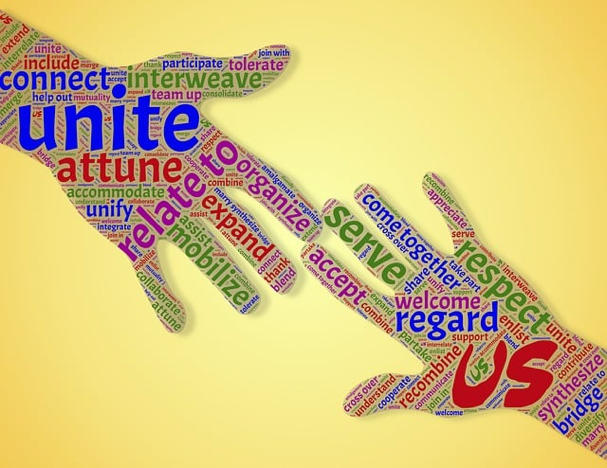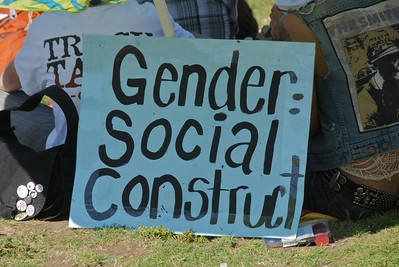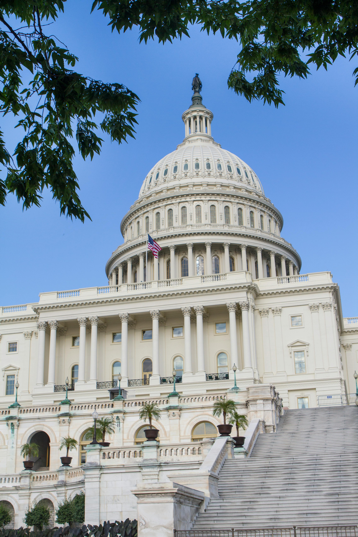35 Ideological Criticism: Description, Interpretation, and Evaluation
Chapter Objectives
Students will:
- Describe an artifact’s ideological message.
- Interpret how an artifact uses ideology to exercise power and control.
- Evaluate how a rhetorical artifact’s ideology strengthens or weakens democratic principles.
The previous chapter introduced you to ideological criticism. We explained that it is a method of rhetorical criticism that exposes the ideology communicated by a rhetorical artifact and interprets how the artifact uses the ideology to exercise power and control. We defined an ideology as a set of shared beliefs and values that forms an interpretation of the world and suggests appropriate ways to act in it. We also guided you through the first two steps of ideological criticism: identifying an appropriate rhetorical artifact and reconstructing its historical context.
In this chapter, we will explain the next three steps: describing the artifact’s ideological message, interpreting how the artifact uses the ideology to exercise power and control, and evaluating how the ideology strengthens or weakens democratic principles.
Describing the Artifact’s Ideological Message
In ideological criticism, the description step entails determining your artifact’s ideological message. To do that, name and describe the ideology your artifact communicates (i.e., the artifact’s content) as well as the rhetorical features it employs to communicate it (i.e., the forms it uses).
Name the Ideology

Critical to ideological criticism is naming the ideology the artifact elevates or challenges. As mentioned previously, an ideology is a set of shared beliefs and values that forms an interpretation of the world and suggests appropriate ways to act in it. Notice that an ideology consists of a set or collection of beliefs and values that coheres into a perspective. Students often mistake a single value or belief for an ideology.
|
Not an Ideology |
Is an Ideology |
|
Devotion |
Patriotism |
|
Devotion is a single value. |
Patriotism consists of a set of beliefs and values:
|
You will know you are naming an ideology when you can identify the collection of interrelated values and beliefs that form the outlook. Box 35.1 offers a list of sample ideologies to help you get started.
Box 35.1 Examples of Ideologies
Agricultural sustainability
Atheism
Buddhism
Christianity
Collectivism
Conservativism
Consumerism
Democracy
Egalitarianism
Environmentalism
Fair trade
Feminism
Hegemonic masculinity
Heteronormativity
Hinduism
Humanism
Idealism
Imperialism
Individualism
Islam
Judaism
Liberalism
Libertarianism
Locotarianism (food movement)
Marxism
Nationalism
Neoliberalism
Nihilism
Pacifism
Patriotism
Racism
Realism
Sexism
Social Darwinism
Socialism
Technological utopianism
Hegemonic Ideologies
 In addition to naming the ideology, identify if it is hegemonic or resistant. A hegemonic ideology is an ideology that has become a predominant way of seeing the world and serves the interests of those who hold institutional or social power. You will know an ideology is a predominant viewpoint because it is promoted, practiced, or reinforced through institutional (social, economic, educational, political, and religious) practices and policies, and it is likely reflected in majority opinions.
In addition to naming the ideology, identify if it is hegemonic or resistant. A hegemonic ideology is an ideology that has become a predominant way of seeing the world and serves the interests of those who hold institutional or social power. You will know an ideology is a predominant viewpoint because it is promoted, practiced, or reinforced through institutional (social, economic, educational, political, and religious) practices and policies, and it is likely reflected in majority opinions.
 Hegemonic ideologies typically privilege people who hold positions of power and/or who have dominantly situated positionalities. In chapter 7, we drew on standpoint theory to explain that our social identities influence our knowledge of the world and our perceptions of what is “true” or “normal.” Dominantly situated identities—such as those perceived as white, able-bodied, or native English speaking—occupy positions of social privilege. They are granted more social power and prestige than their marginally situated counterparts, such as those perceived as nonwhite, physically disabled, or nonnative English speaking. Hegemonic ideologies typically promote values and beliefs that reinforce the power of dominantly situated identities, though we often are unaware of this function.
Hegemonic ideologies typically privilege people who hold positions of power and/or who have dominantly situated positionalities. In chapter 7, we drew on standpoint theory to explain that our social identities influence our knowledge of the world and our perceptions of what is “true” or “normal.” Dominantly situated identities—such as those perceived as white, able-bodied, or native English speaking—occupy positions of social privilege. They are granted more social power and prestige than their marginally situated counterparts, such as those perceived as nonwhite, physically disabled, or nonnative English speaking. Hegemonic ideologies typically promote values and beliefs that reinforce the power of dominantly situated identities, though we often are unaware of this function.
Indeed, hegemonic ideologies are so predominant that most people perceive their values and beliefs as given. That is, these ideologies seem natural, commonsensical, or even ordained by god. In the United States, for example, we might identify such hegemonic ideologies as the following:
- Christianity
- individualism
- heteronormativity
You might support and adhere to one or more of these ideologies. We all support some hegemonic ideologies because we find their beliefs valid and their values laudable. Frankly, it’s very difficult to reject all hegemonic ideologies and belong to a society.
Remember, though, that hegemonic ideologies typically serve the needs and interests of dominantly situated positionalities while ignoring, downplaying, or rejecting the needs and interests of marginally situated positionalities (locally or globally). We’ll return to this notion when we discuss the step of interpreting your artifact’s ideological work. The point here is that it is helpful to identify if the ideology communicated by your artifact is hegemonic and, if so, if your artifact reinforces this ideology or calls it into question.
Box 35.2 Naming Hegemonic Ideologies in #IfTheyGunnedMeDown
In the previous chapter, we introduced you to a Twitter (now X) campaign named #IfTheyGunned MeDown. It began on August 10, 2014, one day after Missouri police officer Darren Wilson shot and killed a young, Black man named Michael Brown. The campaign sought to highlight the news media’s repeated habit of publicizing pictures of Black people that make them appear potentially menacing.
In tweets, African American participants paired two photos, with one photo presenting themselves in a potentially negative light and the other photo depicting themselves in a more positive light (as graduates, parents, public servants, etc.). In most cases, the person posting included the hashtag #IfTheyGunnedMeDown to provoke viewers to wonder which photo the news media would publicize if a police officer killed the person posting.
Yes let’s do that: Which photo does the media use if the police shot me down? #IfTheyGunnedMeDown pic.twitter.com/Ng0pUlxWhr
— C.J. Lawrence (@CJLawrenceEsq) August 10, 2014
We return to this example in this chapter to illustrate the description, interpretation, and evaluation steps of ideological criticism. Here we begin with description by naming the ideologies the tweets elevated or challenged.
In the case of #IfTheyGunnedMeDown tweets, we can identify racism as the hegemonic ideology communicated and challenged.
In each tweet, the rhetor provided a photograph that portrayed a person of color in ways that could trigger racist associations of Black people with criminality. In the US, racism is hegemonic, sadly; its ongoing influence can be found in social, legal, educational, political, and religious institutions, and it serves the dominantly situated positionality of whiteness by associating it, in contrast, with purity and innocence. [1]
The tweets challenged racism by pairing each photograph with a second that portrayed the same person in roles and activities we typically celebrate (as a soldier, graduate, parent, etc.). The pairing made clear that the racist associations with one set of images were unfair and racially biased.
Resistant Ideologies
Just as there are hegemonic ideologies, there are also resistant ideologies. A resistant ideology is one that directly challenges a hegemonic ideology. To revisit our earlier examples,
|
Egalitarianism |
resist(s) |
heteronormativity. |
|
Collectivism |
individualism. |
|
|
Alternative religious systems (Hinduism, Islam, etc.) or nonreligious ideologies (atheism) |
Christianity. |
Artifacts that challenge hegemonic ideologies often (but not always) also promote a resistant ideology.
Box 35.3 Naming Resistant Ideologies in #IfTheyGunnedMeDown
We might argue that the #IfTheyGunnedMeDown tweets promoted the resistant ideology of humanism as they sought to challenge the racial bias in typical photographs circulated by the media of Black individuals. By pairing two very different photographs of themselves, the rhetors reminded viewers of how we all pose and appear differently in varied contexts. They prompted viewers to realize we all have at least two images of ourselves that might prompt very different conclusions about us. In doing so, the tweets promoted the belief in our common human experience as well as the value of emphasizing our shared connections.
Describe the Artifact’s Rhetorical Symbols That Communicate the Ideology
 In addition to naming the ideology communicated by the artifact and identifying it as hegemonic or resistant, you must specify how the artifact communicates the ideology.
In addition to naming the ideology communicated by the artifact and identifying it as hegemonic or resistant, you must specify how the artifact communicates the ideology.
Focus on the artifact’s verbal, nonverbal, visual, and audio symbols that convey its ideological message. For instance, if your artifact is a photograph,
- How is it visually framed or cropped?
- Is it in black and white or color?
- What is the eye drawn to first?
- Is there text within the photograph itself or superimposed on the photograph?
If your artifact is a music video,
- What lyrics accompany what scenes?
- How are scenes visually shot?
- How is the singer or character in the video dressed?
- What does the lighting emphasize or what is placed in the shadows?
- How does the music change in volume and tempo as the video progresses?
Also consider who or what is missing from your artifact. Use your reconstruction of the historical context to notice conspicuous absences. Overall, look closely at the artifact and help your audience understand how its rhetorical features and absences communicate the ideology.
Box 35.4 Rhetorical Symbols to Describe and Interpret in Ideological Criticism
- verbal symbols: word choice, juxtaposition of words with visual or audio features
- nonverbal symbols: appearance, facial expressions, gestures, posture, eye contact, physical movement
- visual symbols: color, lighting, framing, font of text in the image, camera angle, distance, editing or juxtaposition of images, symbols, materials used, size
- audio symbols: sound quality, tempo, pitch, volume, juxtaposition of sound with visual or verbal features
- absence: based on your reconstruction of the context, who or what is conspicuously missing or downplayed by the artifact
Which Comes First? Naming the Ideology or Describing the Artifact’s Rhetorical Symbols?
Describing an artifact’s rhetorical symbols goes hand in hand with identifying the artifact’s ideology. You can tackle them together.
However, you may find it helpful to begin with the artifact’s rhetorical symbols and use them to help you name the ideology the artifact communicates. You can, in other words, work backward from the rhetorical symbols to naming the ideology:
- Spend time with your artifact and list its most striking rhetorical symbols, whether they are verbal, nonverbal, visual, or audio, as well as any glaring absences.
- Identify the belief or value each symbol communicates or challenges. This may take some time.
- Then look over your list and decide what ideology pulls the beliefs and values together into a coherent perspective. You may find it helpful to look back through the sample ideologies in box 35.1 or talk with your instructor for help.
Box 35.5 Moving from Describing the Rhetorical Symbols of, to Naming the Ideologies Communicated by, #IfTheyGunnedMeDown Posts
If we were unsure of what ideologies the Twitter (now X) posts communicate, we might focus initially on their rhetorical symbols. We would probably begin by listing patterns in the visual and nonverbal contrasts between the photographs coupled together, including their differing
- physical settings,
- lighting,
- facial expressions,
- camera angles, and
- ways the subject is depicted in their attire, expression, gestures, or activity.
We could then move to the beliefs and values these features communicate.
- We might notice, for example, that the visual imagery in one group of photographs can be read through a racist lens as suggesting a threat (or guilt).
- The other group of photos communicates innocence by depicting success, pride, joy, and devotion.
We might next consider the consistent verbal feature in the posts. The hashtag “#IfTheyGunnedMeDown” returns to beliefs of guilt and innocence but flips the racist script. It suggests that “They” (the police) are guilty of killing or harming “Me,” the innocent Black person depicted in both photos. Through visual, verbal, and nonverbal features together, then, the tweets promoted the belief (and values) that if the police unfairly acted violently against the rhetor, one photo would showcase the rhetor’s innocence while one might imply the victim was the perpetrator.
The tweets’ communication of these beliefs and values, along with their historical context of appearing the day after NBC News publicized a particular image of Michael Brown, can help us piece together the ideologies they communicate. They illuminated and challenged the hegemonic ideology of racism at work in photos more often selected by the media by pairing them with photos the media could have selected that communicate the resistant ideology of humanism.
Taking time to carefully list all the significant rhetorical symbols of your artifact—and identify what value or belief each communicates—will serve you well. Most directly, it will help you name the ideology communicated by the artifact.
In addition, such work will aid you in identifying and explaining to your audience the specific beliefs and values that compose that ideology. It’s not enough to name the ideology; you need to briefly define and describe its contents as well.
Further, such preparation will also help you name and point out specific rhetorical symbols that communicate the ideology. You may want to pair your descriptions with well-designed visual aids or include an audio or video clip that focuses attention on specific  rhetorical symbols. They can help supply evidence needed for your claims about the artifact’s ideological messaging. If you jump to your interpretations without pointing out the presence of ideological features in your artifact, your interpretation will lack validity.
rhetorical symbols. They can help supply evidence needed for your claims about the artifact’s ideological messaging. If you jump to your interpretations without pointing out the presence of ideological features in your artifact, your interpretation will lack validity.
Finally, listing your artifact’s rhetorical symbols will set you up well to make interpretations, which is what we turn to next.
Interpreting How the Artifact Exercises Power and Control
If you only identify an artifact’s ideology and rhetorical symbols but don’t interpret how they function persuasively, you will mostly have summarized or narrated the artifact. You will miss its symbolic action.
To interpret an artifact using ideological criticism, infer how it uses an ideology to exercise power and control. We will unpack what that means—and explain how to do it—by providing the concept of agency as well as additional factors to consider when your artifact supports a hegemonic ideology, when it resists a hegemonic ideology, and when it does not neatly do either.
Agency
 Agency is an individual’s ability to act freely or to independently intervene in a situation, their own life, and the world. When you analyze an artifact for agency, you interpret how the artifact depicts an individual or group’s freedom to act. Agency is particularly important in ideological criticism because it helps you discover how artifacts employ ideologies in ways that attempt to expand or contract the liberty of others. You can also reveal the ways democratic participants can resist such messages.
Agency is an individual’s ability to act freely or to independently intervene in a situation, their own life, and the world. When you analyze an artifact for agency, you interpret how the artifact depicts an individual or group’s freedom to act. Agency is particularly important in ideological criticism because it helps you discover how artifacts employ ideologies in ways that attempt to expand or contract the liberty of others. You can also reveal the ways democratic participants can resist such messages.
Box 35.6 Agency in #IfTheyGunnedMeDown
If we return to the tweets, we see how the paired photographs drew attention to the agency exercised by major news corporations like NBC News over the images they select to report stories involving people of color. The posts suggested that of the photographs publicly available, the news media chose an image that could be damning when reporting about crime or violence. Relatedly, the posts highlighted the lack of agency that people of color, such as Brown, have over how they are depicted by the news media.

By posting the paired images, however, Twitter (now X) users asserted their own agency and invited audiences to join them in seeking social change. C. J. Lawrence sparked the broad participation through his original tweet when he said, “Yes let’s do that: Which photo does the media use if the police shot me down? #IfTheyGunnedMeDown.” He later shared in an interview that “When I say, ‘Yes, let’s do that,’ my intention was that people would participate.”[2] His use of “let’s” called out to readers who shared his frustrations to join the campaign. As they did, they promoted positive images of Black individuals, reclaiming some of their agency and circumventing the major news media’s gatekeeping. These photos helped promote the ideology of humanism by depicting themselves in ways all viewers could relate to and identify with.
When you interpret your artifact’s persuasive functions, ask how it renders an individual’s or group’s agency, using the prompts in box 35.7. Your interpretations of agency can and should contribute to your analysis of how your artifact supported hegemonic ideologies, resisted hegemonic ideologies, or both.
Box 35.7 Questions to Ask About Agency
- How much and what type of freedom does the artifact depict people as having or exercising? Which people?
- How does the artifact depict an individual or group as lacking freedom or being controlled by or under the power of others?
- Does the artifact conspicuously exclude anyone? If so, how might their exclusion attempt to restrict or expand their or others’ agency?
- How does the artifact’s depiction of agency help justify or challenge a particular ideology, especially given the historical context?
When Your Artifact Supports a Hegemonic Ideology
 Remember that a hegemonic ideology is a set of values, beliefs, interpretations, and assumptions that becomes a predominant viewpoint and serves the political and economic interests of dominantly situated positionalities. Consequently, they are typically used to portray and legitimize those standpoints as superior to marginally situated positionalities.
Remember that a hegemonic ideology is a set of values, beliefs, interpretations, and assumptions that becomes a predominant viewpoint and serves the political and economic interests of dominantly situated positionalities. Consequently, they are typically used to portray and legitimize those standpoints as superior to marginally situated positionalities.
If your artifact reinforces a hegemonic ideology, then interpret how the artifact uses that ideology to exercise power and control. Use the questions in box 35.8 to guide your interpretations.
Box 35.8 Questions to Ask When an Artifact Supports a Hegemonic Ideology
- Who or what does the artifact depict as desirable, moral, innocent, trustworthy, normal, and/or good-natured? Are they dominantly situated positionalities? How does the artifact encourage audiences to side with them?
- Who or what does the artifact define as undesirable, immoral, guilty, sneaky, abnormal, and/or threatening? Are they marginally situated positionalities? How does the artifact encourage audiences to reject or disapprove of them?

- What way of acting or behaving in the world is highlighted—or even praised—in the artifact? What ideas, beliefs, or values does the artifact obscure or hide—or perhaps overtly discredit?
- What hierarchies—unequal ranking(s) of people or groups—does the artifact produce through its ideological messaging? Hierarchies can consist of multiple, ranked groups.
- How does the artifact use hierarchies to try to justify or legitimate particular actions or policies? To serve the needs of those in power? To ignore, downplay, or reject the needs of marginally situated positionalities?
- How does the artifact present the ideological beliefs, values, and depictions as natural or normal? How does it discourage audiences from questioning it?
Box 35.9 Interpreting How News Media Imagery Exercises Power and Control
When the news media include a picture of the subject they are reporting about in their story, they don’t typically encourage consumers to reflect on this choice. Little or no information is given about where journalists found the picture or its original context (e.g., at a Halloween party, goofing around). Consequently, their selection implies that’s who the person depicted “is.”
Depictions: As we’ve established, NBC News publicized a photograph of Brown wearing a Nike Air tank top, staring down at the camera with no smile, and showing a hand signal. This picture is innocuous on its own. But paired with the tweet’s caption, “Unarmed Missouri teen killed by officer after ‘physical confrontation,’” the photo could be read as implying that Brown, though unarmed, prompted or even participated in the confrontation. This reading is encouraged by and reinforces the hegemonic, racist depiction of African American men as threats. By implication, this reading also implies that the (white) police officer who killed Brown acted reasonably.
Hierarchy: Together, the image and caption suggest a legal and racial hierarchy where the white police officer is depicted as morally and legally superior to the African American teenager.
Support for powerful people and institutions: Such depictions implicitly (and unfairly) attempt to justify or explain police officers’ use of violent force against African American men. Thus, images and captions like the one NBC News used for Brown serve the interests of those in positions of power (such as police officers) within the legal system.
Normalization: By selecting yet another potentially damning image of a Black man, the NBC News post helped renaturalize the association of Blackness with crime. It perpetuated racism.
When Your Artifact Challenges a Hegemonic Ideology
Artifacts can, alternatively, challenge a hegemonic ideology, often by exposing the hegemonic ideology as a social construct. A social construct is a category, idea, or description that humans have created to explain reality. The important idea here is that a social construct is a product of human language and interactions rather than something biological, natural, or ordained by God.

The goal of artifacts that challenge hegemonic ideologies is to expose them as social constructs that are human rather than natural conceptions—and therefore alterable. Do women make inferior soldiers, or is that a social construct? Are fathers inherently less nurturing than mothers, or does that explanation enable fathers to spend more time in the workplace and mothers more time at home with children?
For artifacts that challenge hegemonic ideologies, explain to your audience how your artifact exposed a hegemonic ideology as a human (and flawed) production that can and should be changed.
 Artifacts that challenge a hegemonic ideology often do so by advocating a resistant ideology. Recall that a resistant ideology is one that directly challenges and counters a hegemonic ideology. In such cases, the critic may also ask how the resistant ideology offers an alternative depiction (or counterpresentation) of dominantly and marginally situated identities. Does the resistant ideology replace a hierarchy with a new hierarchy (perhaps with the groups’ positions switched) or a more equitable or egalitarian depiction?
Artifacts that challenge a hegemonic ideology often do so by advocating a resistant ideology. Recall that a resistant ideology is one that directly challenges and counters a hegemonic ideology. In such cases, the critic may also ask how the resistant ideology offers an alternative depiction (or counterpresentation) of dominantly and marginally situated identities. Does the resistant ideology replace a hierarchy with a new hierarchy (perhaps with the groups’ positions switched) or a more equitable or egalitarian depiction?
Box 35.10 Questions to Ask When an Artifact Resists Hegemonic Ideology
- How do the artifact’s verbal, nonverbal, visual, or audio symbols challenge a hegemonic ideology? What does the artifact suggest is wrong with our collective way of seeing?
- What social constructs does the artifact challenge or expose?
- What hierarchy does the artifact resist?
- How does the artifact promote a resistant ideology that runs counter to a hegemonic ideology?
- What does the artifact replace the hierarchy with: a new hierarchy (that depicts a dominant group in an unflattering way and/or presents those with less societal power favorably) or a more equitable or egalitarian depiction of individuals and groups?
Box 35.11 Interpreting How #IfTheyGunnedMeDown Exercised Power and Control
Challenge hegemonic ideology: The tweets posted under #IfTheyGunnedMeDown directly countered the racism perpetuated by the news media’s choice of potentially damning images of Black people by promoting the resistant ideology of humanism. This ideology was communicated through the pairing of photographs.
Replace hierarchy with an egalitarian depiction: As we established earlier, by pairing contrasting photos, the rhetors reminded viewers of how we all pose and appear differently in varied contexts. All of us have selfies that may not reflect positively on us when viewed out of context. This belief directly resisted the racist hierarchy that oppressed African Americans as threats.
The other set of photos invited viewers to identify with Black subjects through their depiction in roles (as parents, graduates, soldiers, etc.) and doing actions (nurturing, graduating, serving, etc.) that we collectively celebrate. Such identification produced egalitarianism in our shared humanity.
Reveal a social construct: By countering racism with humanism, the paired photos revealed depictions of Black people as threats as a social construct—one that could easily be replaced with depictions of the same people as productive members of society.
But What If My Artifact.…?
Perhaps your artifact does not neatly fit into the two previous categories. Not all artifacts wholly reinforce or resist hegemonic ideologies.

You may choose an artifact, for instance, that offers resistance but not in the ways we’ve established. Some rhetors seek to redefine the meaning or application of a hegemonic ideology. Imagine a YouTube video that refers to public school teachers as exemplars of patriotism and recognizes their sacrifice and dedication to their country. Such a video might leave intact the values and beliefs associated with the hegemonic ideology of patriotism but resist its typical narrowed application to military veterans or government workers. As a critic, you might use the guidance in the previous sections to consider how the artifact both upholds and resists a hegemonic ideology.
Other artifacts challenge resistant ideologies and seek to reinstate hegemonic beliefs and values. You might hear a sermon, for example, that critiques egalitarianism when it comes to gender nonbinary people and upholds a gender binary by supporting religious fundamentalism. In such cases, use the guidance provided in the previous section for when artifacts reinforce hegemonic ideologies. You might add to that your consideration of how the artifact strives to counter a resistant ideology by depicting it as a social construct.
A final word of caution about interpretation in ideological criticism: Not everything that is interesting about your artifact and its context may make it into your critique. You are looking, in particular, for one of two things:
- First, you might explain how symbols in your artifact reinforce a particular set of beliefs and behaviors as “natural” when, in fact, these beliefs or behaviors are socially constructed, and how that ideology produces a hierarchy among individuals or groups, perhaps to try to justify a policy or action.
- Second, you may illuminate how symbols in your artifact explicitly challenge a hegemonic ideology and suggest that we can and should think and act differently—especially for the benefit of those groups that are traditionally silenced, overlooked, or politically and economically oppressed.
Box 35.12 Gender Critique as a Form of Ideological Criticism
Questions and assumptions about gender are often rooted in ideology. Philosophers and rhetorical critics see many commonly held ideas about gender as social constructs.
If this is a topic that interests you, you might wish to focus your critique on how gender is portrayed and prescribed in your artifact. Does your artifact reinforce the hegemonic belief about gender as a binary (i.e., men and women as separate and different), or does it challenge that assumption, such as by depicting gender as fluid or as existing along a spectrum? Do you see your artifact’s portrayals of people as limiting or policing what’s considered appropriately masculine or feminine? Do you want to argue that your artifact is working to expand what the culture defines as acceptable behavior and gender expression? If your answer to these (and similar) questions is yes, then your ideological criticism is performing a gender critique.
Evaluating the Rhetorical Artifact

We wrote this chapter because we are interested in educating civically engaged critics. We believe you are more able to participate in and shape democratic organizations when you can recognize how rhetoric and ideology influence ideas and exert social control.
With this in mind, the final step to any rhetorical critique is to help your audiences understand how your artifact relates to democratic principles and practices. In chapter 31, we defined democratic principles as the behavioral standards necessary for democratic governance to exist and thrive, and we gave examples such as the rule of law, the unity or shared identity of community members, and the open and thoughtful engagement of public issues, arguments, and positions.
In your ideological criticism, make certain to argue how the artifact strengthens or weakens democratic principles so your audience members are equipped to be fuller participants in a democratic society.
Did the Artifact Strengthen Democratic Principles? How?
 In chapter 33, we explained that an artifact can strengthen democracy directly by explicitly advocating democratic principles or indirectly by modeling or practicing the principles. We further explained that any artifact that practices responsible productive discourse indirectly reinforces democratic principles because it, as defined in chapter 4, draws on the qualities of productive discourse to produce a more inclusive and equitable public sphere. You might, then, illustrate how your artifact strengthens democratic principles by showing the following:
In chapter 33, we explained that an artifact can strengthen democracy directly by explicitly advocating democratic principles or indirectly by modeling or practicing the principles. We further explained that any artifact that practices responsible productive discourse indirectly reinforces democratic principles because it, as defined in chapter 4, draws on the qualities of productive discourse to produce a more inclusive and equitable public sphere. You might, then, illustrate how your artifact strengthens democratic principles by showing the following:
- how it explicitly advocates for specific democratic principles
- how it illustrates qualities of productive discourse
- how it sparks discussion about an overlooked and ongoing societal problem
- how it expands the public sphere by including historically marginalized members of the public and empowering them to act as democratic participants
- how it questions the power of historically dominant members of the public rather than unreflectively granting their perspectives authority
Did the Artifact Weaken Democratic Principles? How?
Artifacts that weaken democratic principles tend not to do the things we just listed. You likely have an artifact that discourages democratic principles if you see that your artifact
- explicitly calls for the dismissal of democratic principles, subjugates them to other values, or refuses their application to particular groups of people;
- exemplifies qualities of unproductive discourse;
- quells discussion about an overlooked and ongoing societal problem;
- restricts the public sphere by actively excluding or denigrating historically marginalized voices; or
- preserves the power of historically dominant groups by uncritically accepting their perspectives.
Box 35.13 Evaluating #IfTheyGunnedMeDown
The Twitter (now X) phenomenon that paired photos of young people of color supported the democratic principles of free speech and the participation of people in civic affairs by empowering the young people—whose voices had historically been largely excluded from news coverage—to tell their own stories. Participants’ posts sparked a discussion about the ongoing but often overlooked issue of racism in the news media and questioned the media’s historic power to shape audiences’ perceptions of the people they cover. The tweets also imagined equality by offering images that better matched the news media’s typical, and more humanizing, photographs of white individuals.
By revealing how such posts upheld democratic principles, an ideological analysis of the paired images can help viewers better understand the photographs as rhetorical artifacts functioning persuasively in our world.

The important point is that ideological criticism is ultimately interested in social change. Will a critique of Twitter (now X) posts change the way US news outlets select pictures for their publications? Maybe not. Perhaps all an analysis of the Twitter/X feed will do is plant a seed of awareness that will move some audiences to think differently about the way they receive news and the way members of their community are portrayed in the media. Such seeds of awareness, however, have the power to grow and reshape culture when enough people take notice. The power of consciousness raising should not be ignored, as it encourages the sharing of diverse opinions, talents, and knowledge for the good of the whole.
Ultimately, however, ideological critique is most powerful—and most true to its roots—when it opens avenues for more people to participate in their society, culture, and government. An ideological critique should move people to respond and to respond with action. The original proponents of ideological criticism wanted their analyses to help change social structures and material conditions.
As you craft your ideological critique, invite your audience to participate in an action or protest to counter the form of ideological control you analyze or to support the challenge you investigated. You might model such action by producing and publicizing your own artifact that ideologically counters the one you analyzed. Similar to Lawrence’s original tweet, invite your audience to join your efforts. Whatever you do, make your insights available to the public, and invite them to move on this evidence.
Professor of communication James Arnt Aune makes the point this way:
There remains the risk…of the scholastic illusion that “raising consciousness” will create liberation, failing to recognize the inertia which results from the inscription of social structures in bodies.
Radical social change—dare I say “revolution”?—appears to come when bodies learn to move in different ways, when Rosa Parks refuses to move, when drag queens riot at Stonewall, when Egyptians take to the streets against Mubarak, or when workers of all kinds shut down the Wisconsin State Capitol Building.[3]
Summary
As a method of criticism, ideological analysis exposes the ideology communicated by a rhetorical artifact and interprets how the artifact exercises power and control. But this method is also deeply invested in the health of our democracy and social change. Ideological criticism’s goal is to help audiences resist ideological messages that constrict democratic participation and support those that expand such engagement.
- To analyze an artifact, the critic names the ideology communicated by the artifact, identifies it as hegemonic or resistant, and describes the verbal, nonverbal, visual, and audio features that convey the ideology’s beliefs and values.
- When an ideology gains enough adherents that it becomes a predominant viewpoint and serves the interests of those in power, we say it is a hegemonic ideology.
- Ideologies can also be resistant. Those that are established to counter or challenge a hegemonic ideology are called resistant ideologies.
- The critic interprets how the artifact uses the ideology to exercise power and control.
- Because ideological criticism is deeply invested in social change, it is important that critics evaluate how the artifact’s ideological assumptions elevate or challenge democratic principles. These evaluations themselves can function as acts of resistance and open ways for democratic participants to enact social change.
Key Terms
agency
hegemonic ideology
hierarchy
resistant ideology
social construct
Review Questions
- Explain the difference between hegemonic ideology and resistant ideology.
- What kinds of rhetorical symbols might you describe when arguing that an artifact communicates a particular ideology?
- What types of questions might you ask and answer when interpreting how a hegemonic ideology exercised power and control? A resistant ideology?
- What is the ultimate goal of ideological criticism?
Discussion Questions
- Think of a current television commercial or music video that bothers you for some reason (for example, the way it portrays a group you belong to or a group you don’t belong to). Explain to your classmates why you find the commercial problematic. Can you identify an ideology at work in the artifact?
- What ideologies do you think are good or useful? Which are bad or harmful? Explain.
- What is an example of an artifact exercising power and control? Over whom? How?
- Does resistance work? In other words, can you think of a time when resistance to a hegemonic ideology made a marked difference in people’s lives?
- Lisa Flores, “Between Abundance and Marginalization: The Imperative of Racial Rhetorical Criticism,” Review of Communication 16, no. 1 (2016): 4–24. ↵
- Ethan Zuckerman, “#iftheygunnedmedown Six Years Later, and Just as Vital—an Interview with Activist C. J. Lawrence,” Ethan Zuckerman (blog), June 5, 2020, https://ethanzuckerman.com/2020/06/05/iftheygunnedmedown-six-years-later-and-just-as-vital-an-interview-with-activist-c-j-lawrence/. ↵
- James Arnt Aune, “The Scholastic Fallacy, Habitus, and Symbolic Violence: Pierre Bourdieu and the Prospects of Ideology Criticism,” Western Journal of Communication 75, no. 4 (2011): 432. ↵


